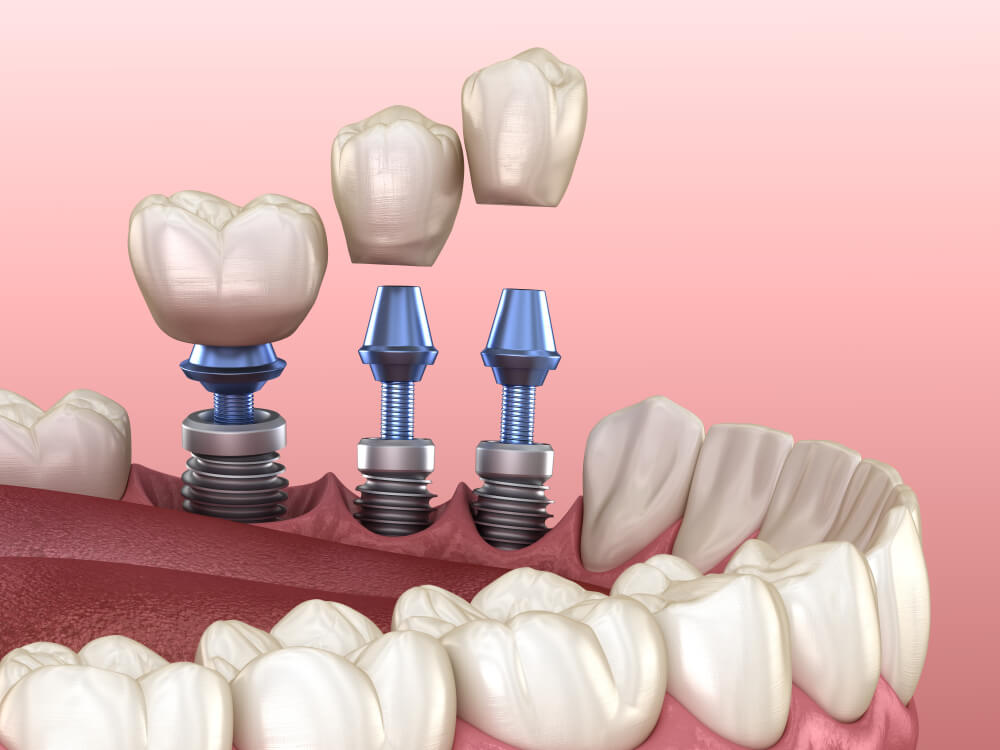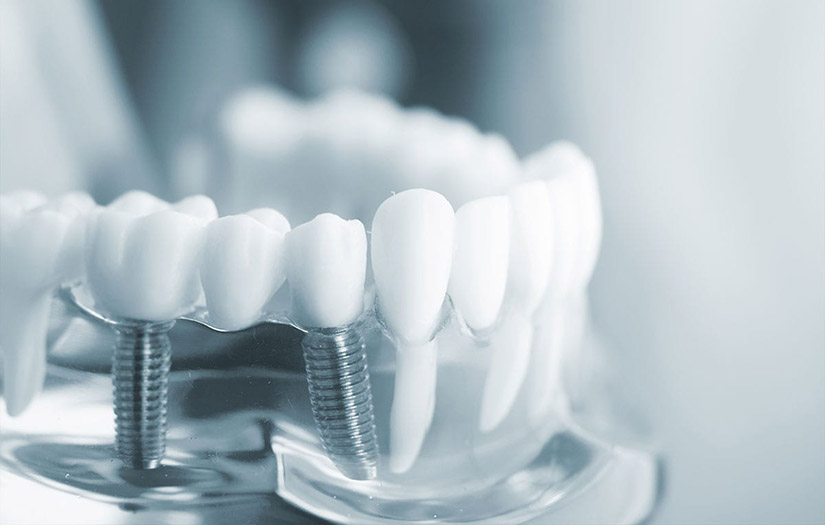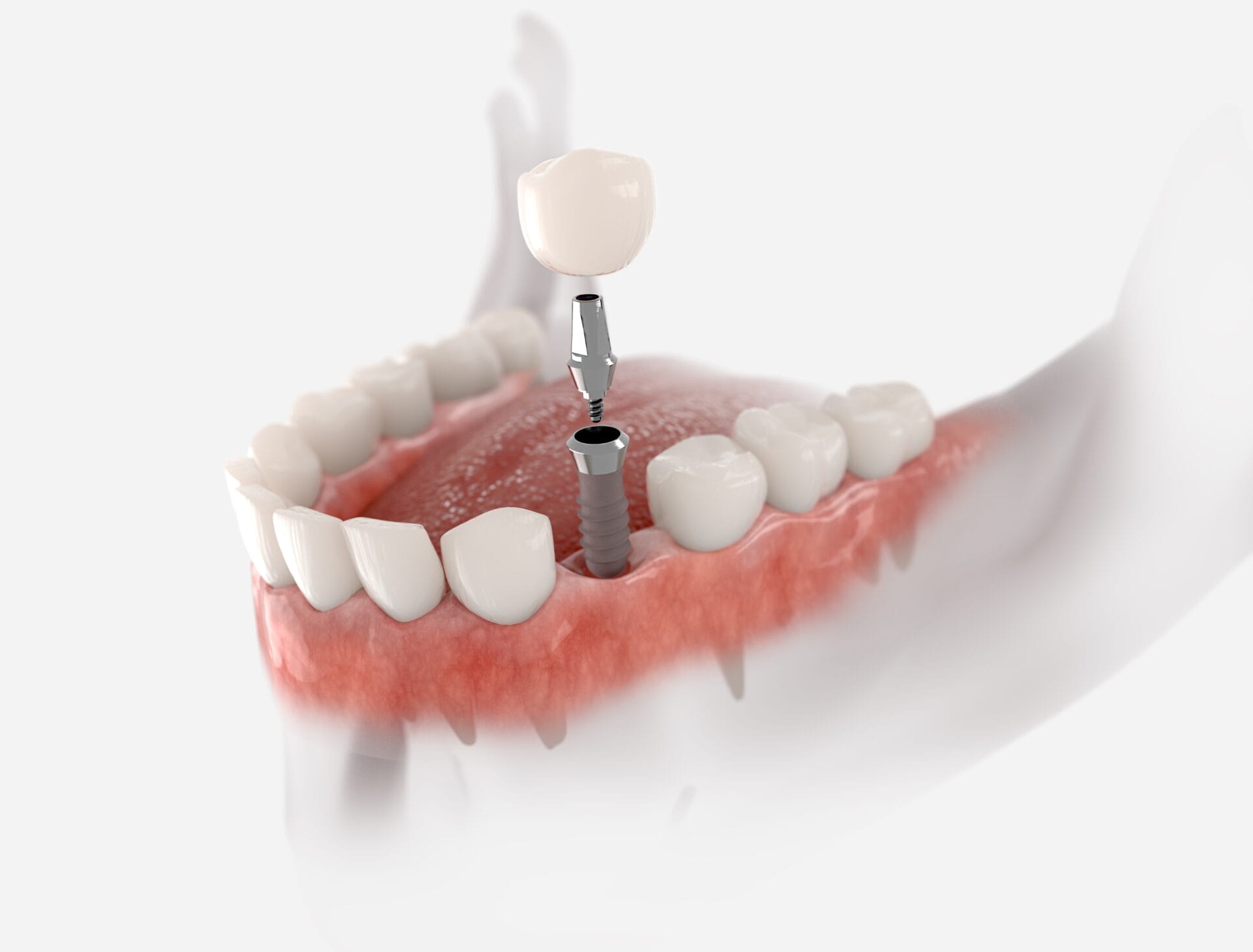Recover Your Smile with Dental Implants Kent: Professional Solutions
Wiki Article
Experience the Most Recent Advancements in Dental Implants Innovation
As the field of dental care continues to develop, the advancements in oral implant technology have been nothing brief of remarkable. The combination of modern technology is revolutionizing the functionality of dental implants, assuring boosted results and client contentment.Advanced Products for Improved Durability
In the realm of oral implants modern technology, the integration of innovative materials has actually dramatically added to enhancing durability and longevity of these critical oral prosthetics. The utilization of products such as titanium alloys, zirconia, and ceramic substances has transformed the area by using raised toughness, biocompatibility, and resistance to rust.
Titanium alloys are widely utilized in dental implants as a result of their exceptional strength-to-weight ratio, deterioration resistance, and compatibility with the body. These alloys make certain the stability and durability of the implant by withstanding the pressures put in throughout chewing and speaking, offering a trusted remedy for clients looking for long lasting tooth replacements.
Zirconia, a kind of ceramic product, has actually acquired appeal for its biocompatibility and natural tooth-like look. Its high stamina and resistance to put on make it a suitable selection for oral crowns and bridges, boosting the general aesthetic appeals and capability of the implant.

Digital Imaging for Precise Placement
The advancement of oral implants innovation has actually further progressed with the combination of electronic imaging techniques, ensuring specific placement of these prosthetics for optimum useful and visual end results. Digital imaging plays a critical role in the planning and placement of dental implants by giving comprehensive 3D pictures of the patient's jawbone framework. This modern technology enables dentists to assess bone density, situate essential frameworks, and intend the precise placement and angle for dental implant placement with unrivaled accuracy.By making use of digital imaging, dental experts can produce virtual medical guides that act as a roadmap during the dental implant positioning procedure. These guides are customized for each individual, taking right into account their distinct composition and the preferred end result. This degree of accuracy not only improves the success price of oral implant treatments but also reduces the risk of difficulties.
Moreover, digital imaging enables dentists to imagine the final prosthetic repair prior to the real positioning of implants, allowing for thorough planning and making sure that the end result meets the patient's visual expectations. Generally, the combination of digital imaging technology has changed the field of dental implants, offering patients a much more foreseeable, reliable, and patient-specific treatment strategy.

Minimally Intrusive Surgical Techniques


Improvements in surgical strategies have resulted in the advancement of minimally invasive methods in the area of oral implantology. These techniques aim to reduce injury to the client, shorten healing times, and boost total treatment outcomes. Minimally intrusive surgeries entail smaller sized incisions, specialized instruments, and progressed imaging technologies to exactly put oral implants go now with very little interruption to surrounding tissues.
One key facet of minimally intrusive methods is the usage of led surgical treatment, where 3D imaging and computer-aided design software are employed to plan the dental implant positioning with terrific accuracy. This allows for a much more foreseeable result and can commonly eliminate the demand for extensive flap surgical treatment.
Moreover, advancements in products and implant layout have additionally added to the success of minimally intrusive techniques. Implants with enhanced surface area residential or commercial properties promote much faster osseointegration, decreasing the recovery time required prior to the prosthetic reconstruction can be put.
3D Printing for Custom-made Solutions
Utilizing 3D printing innovation in oral implantology permits the development of very customized options customized to individual client requirements and physiological variations. This sophisticated technology allows dental specialists to develop and fabricate oral implants with remarkable accuracy and precision. By utilizing digital imaging techniques, such as cone beam calculated tomography (CBCT), comprehensive 3D versions of the individual's mouth can be generated to guide the dental implant preparing process.Among the key advantages of 3D printing in oral implantology is check it out the capability to develop patient-specific implants that flawlessly fit the special composition of each person. This tailored technique assists boost the general success and longevity of the dental implant by making certain optimal fit and alignment. Additionally, 3D printing enables the manufacturing of complicated geometries and elaborate frameworks that would certainly be challenging or difficult to attain making use of conventional production techniques.
In addition, 3D printing modern technology makes it possible for dental practitioners to simplify the implantation procedure, lowering surgery time and boosting overall patient experience. With its ability to create personalized options rapidly and effectively, 3D printing is reinventing the field of oral implantology, offering patients ingenious therapy options and boosted end results.
Integrated Modern Technology for Improved Capability
Executing advanced innovation in oral implantology enhances capability and accuracy, raising the criterion of treatment for patients going through implant treatments. Integrated modern technology plays a crucial role in boosting the overall success and sturdiness of dental implants.Moreover, the integration of computer-aided design and computer-aided production (CAD/CAM) modern technology makes it possible for the development of personalized implant reconstructions with exceptional precision. CAD/CAM systems utilize digital impacts to make prosthetics that perfectly fit the person's one-of-a-kind composition, guaranteeing ideal comfort and performance. In addition, the usage of robotic-assisted surgical treatment in implant placement enhances precision and lessens the danger of human error.
Conclusion
Finally, the most recent advancements in oral implants innovation offer enhanced resilience through sophisticated materials, exact placement with digital imaging, minimally invasive medical strategies, tailored services with 3D printing, and enhanced capability with integrated modern technology - Dental implants Kent. These improvements in dental implants technology are reinventing the area and offering individuals with more effective and efficient therapy options for restoring their smiles and dental wellnessThe combination of modern technology is changing the performance of dental implants, assuring improved end results and patient fulfillment.
The advancement of oral this post implants innovation has actually even more progressed with the combination of electronic imaging techniques, making sure accurate placement of these prosthetics for optimum useful and visual outcomes. Minimally intrusive medical treatments involve smaller lacerations, specialized tools, and advanced imaging technologies to exactly place dental implants with very little interruption to surrounding tissues.
Applying cutting-edge modern technology in oral implantology enhances capability and accuracy, elevating the requirement of care for individuals undertaking dental implant procedures. Dental implants Kent. Integrated technology plays a crucial duty in boosting the general success and toughness of dental implants
Report this wiki page